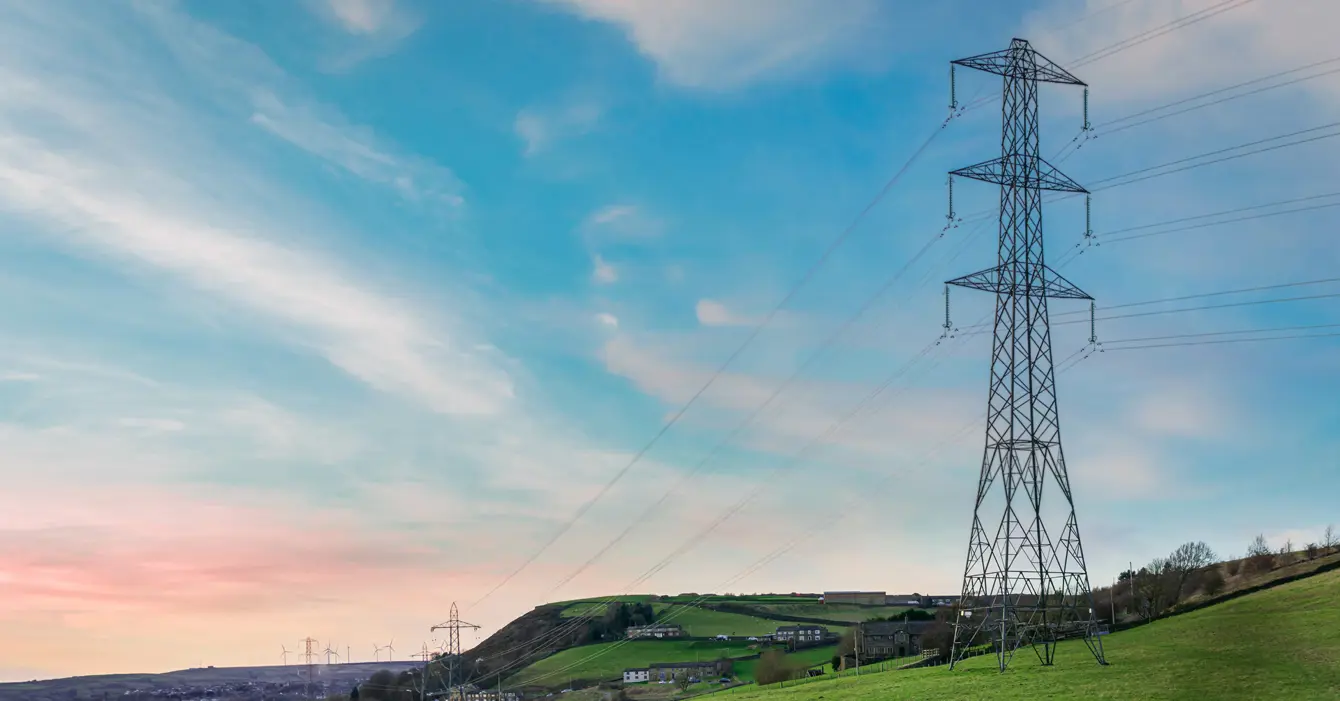The Transitional Regional Energy Strategic Plan (tRESP) consultation, launched in September 2025, marks a pivotal moment in how Great Britain plans, invests in, and delivers the energy transition. For developers, operators and investors, and anyone involved in shaping places, this is not just another technical consultation — it is the foundation of a new way of coordinating infrastructure, aligning investment, and delivering the Government’s ambitious 2030 decarbonised grid and 2050 net zero targets.
The tRESP is not the final destination — it is a stepping stone towards full Regional Energy Strategic Plans (RESPs) from 2026. But it is a critical milestone: a unique opportunity for the planning and development sector to help ensure that the energy transition reflects local needs, supports growth, and is achievable on the ground.
In this blog, I’ll explain:
-
What the tRESP is and why it matters
-
The four key components of the plan
-
Opportunities for the sector
-
Potential challenges and watch-points
-
Why your engagement is essential before the consultation closes on 3 November 2025.
What is the tRESP?
At its heart, the tRESP is a national energy planning exercise with regional granularity. Led by the National Energy System Operator (NESO) under Ofgem’s direction, the plan provides the first coordinated framework to guide how the electricity distribution networks (and wider energy system) respond to the rapid growth of low-carbon technologies — from heat pumps and EVs to renewables and storage.
It will directly feed into the ED3 price control process (2028–2033) — the regulatory framework that sets out what investment Distribution Network Operators (DNOs) can make, and how those costs are recovered. In other words, the tRESP will influence where new capacity is built, when, and at what cost.
For energy developers and operators, the outcomes of the consultation could:
-
Shape the availability of grid capacity for housing, commercial development, and infrastructure projects.
-
Influence how regions balance growth and decarbonisation.
-
Provide new data, maps, and tools that can support local plan-making and infrastructure delivery.
The consultation is structured around four interlocking components:
-
Nations and Regions Contexts – baseline conditions and priorities for each of the 11 RESP areas.
-
Pathways – short and long-term projections for low-carbon technologies out to 2050.
-
Consistent Planning Assumptions (CPAs) – agreed national assumptions for DNOs to use in forecasting.
-
Strategic Investment Need (SI Need) – identifying where targeted network investment could unlock growth and accelerate decarbonisation.
1. Nations and Regions Contexts – A New Evidence Base
The tRESP provides initial reports for each nation and region, combining demographics, socio-economics, energy infrastructure, transport, heating, industry, economy, and targets. These are presented through geospatial maps, charts, and narratives on the NESO digital platform.
For energy developers and operators, this is significant:
-
It creates a consistent evidence base for energy planning, available at regional scale.
-
It highlights differences across places — recognising that the South West, Scotland, or the North East face distinct challenges.
-
It links energy infrastructure to broader socio-economic and planning considerations.
Watch point: Local nuance is still limited. For now, nationally validated datasets have been prioritised, with local datasets excluded to ensure consistency. That means local authority, developer, or community-level insights are not fully represented. The full RESP (from 2026) will integrate more place-based engagement — but only if stakeholders feed into this transitional stage.
2. Pathways – Mapping the Road to 2030 and 2050
The Pathways element models the scale and timing of low-carbon technology deployment.
-
A single short-term pathway to 2035 aligns with Ofgem’s requirements and reflects the Holistic Transition Future Energy Scenario (FES) – high renewables, high consumer engagement
-
From 2035, three long-term pathways to 2050 explore different futures: Holistic Transition, Electric Engagement, and Hydrogen Evolution.
For energy developers and operators, this provides early visibility of:
-
Where and when demand for electricity will grow (e.g. from heat pump uptake or EV charging).
-
How much renewable generation and storage is expected to come online in different regions.
-
The scale of infrastructure investment needed to deliver grid decarbonisation.
Watch point: These pathways are still being refined. Data shared with DNOs in July 2025 will be updated in November and December, with the final version due January 2026. While the consultation is based on a moving picture, feedback now will help ensure it reflects local and project-level realities.
3. Consistent Planning Assumptions (CPAs) – Getting the Numbers Right
Forecasting energy demand is notoriously complex. To ensure consistency across DNOs, the tRESP proposes common assumptions on key drivers of demand growth:
The CPAs define not just the numbers but also the methodology for translating technology adoption into peak demand — the key driver of network reinforcement.
For energy developers and operators, CPAs matter because they underpin the scale of network upgrades that may or may not be delivered in each region. If assumptions are too optimistic (or pessimistic), the grid could be over- or under-prepared, with real-world consequences for housing delivery, economic growth, and decarbonisation targets.
Watch point: While consistency is welcome, there is a tension between national standardisation and local realities. For example, assumptions about EV adoption or heat pump uptake may not reflect local housing stock, affluence, or rurality. This is where local insight will be vital to ensure the assumptions reflect real-world development patterns.
4. Strategic Investment Need – Where Big Decisions Will Be Made
Perhaps the most directly relevant component is the identification of Strategic Investment Needs (SI Needs) — the areas where targeted investment could unlock growth and accelerate decarbonisation.
NESO has launched a GB-wide request for information (RFI) to capture emerging energy needs not already in the pathways. Over 1,700 submissions have already been received, with consultation maps showing clusters of potential needs.
SI Needs could include:
-
Anticipatory investment for major housing or employment growth areas.
-
Upgrades to enable industrial decarbonisation.
-
Reinforcement for cross-boundary or whole-system benefits.
For energy developers and operators, this is where local development priorities most directly intersect with the energy system.
Watch points:
-
Current outputs are interim and don’t yet include hydrogen infrastructure or motorway service areas
-
Inclusion of a need does not guarantee investment — it simply flags areas where coordination may be warranted.
-
Active engagement is crucial to ensure local growth priorities are visible and not overlooked in favour of more ‘obvious’ system-wide drivers.
5. Opportunities for the Sector
From an energy and infrastructure perspective, the tRESP is both a challenge and an opportunity:
- Evidence for Local Plans – The Nations and Regions Contexts provide a new dataset to support local plan-making, infrastructure delivery plans, and climate action strategies.
- Alignment of Energy and Spatial Planning – For the first time, regional energy scenarios are being tied explicitly to development and socio-economic trends.
- Influence Over Strategic Investment – By engaging with the consultation, stakeholders can shape which growth areas are recognised as nationally significant.
- Anticipatory Planning – Early visibility of pathways allows developers and operators to start considering how EV charging, heat pumps, and renewables will reshape demand for land, infrastructure, and buildings.
Key Watch-Points and Risks
While the tRESP is positive, stakeholders should approach it with a critical eye:
-
Local Data Gaps – Without strong local input, the risk is that national datasets underplay or misrepresent local realities.
-
Timing – The consultation closes on 3 November 2025, but final outputs aren’t due until January 2026. That leaves limited time for integration into live plan-making processes.
-
Uncertainty Beyond 2035 – With three diverging pathways, long-term clarity is limited. These should be seen as scenarios, not forecasts.
-
Delivery Risk – Identifying need is not the same as securing investment. Ofgem’s price control decisions will ultimately determine what is funded.
-
Integration with Other Reforms – The tRESP sits alongside the Clean Power 2030 Action Plan, planning reform, and wider infrastructure initiatives. The risk is policy overlap or misalignment.
Why Engagement is Essential
NESO has made clear that this consultation is both a test of approach and an invitation to collaborate. For energy developers, operators, and local authorities, this is a rare opportunity to shape national infrastructure priorities before they are locked in.
The consultation asks practical questions, including:
-
Do the Nations and Regions Contexts provide a clear and useful reflection of your area’s conditions?
-
Do the Pathways align with your local understanding of future demand and generation?
-
Are the Consistent Planning Assumptions (CPAs) appropriate for your region and sector?
-
Where should Strategic Investment be prioritised to unlock growth or accelerate decarbonisation?
Responses are due by 3 November 2025 via the NESO consultation portal.
Final Thoughts
The tRESP consultation may sound technical, but its implications are deeply practical. For energy developers and operators, it is about ensuring that the future energy system:
-
Unlocks, rather than constrains, growth
-
Reflects the realities of place
-
Delivers on net zero and resilience in a way that supports communities
The message is clear: if we want a system that works for our places, we need to engage now.
This is a chance to help create an energy system that is strategic, equitable, and place-based - and that delivers not just on 2050 net zero, but on the urgent 2030 decarbonised grid.



